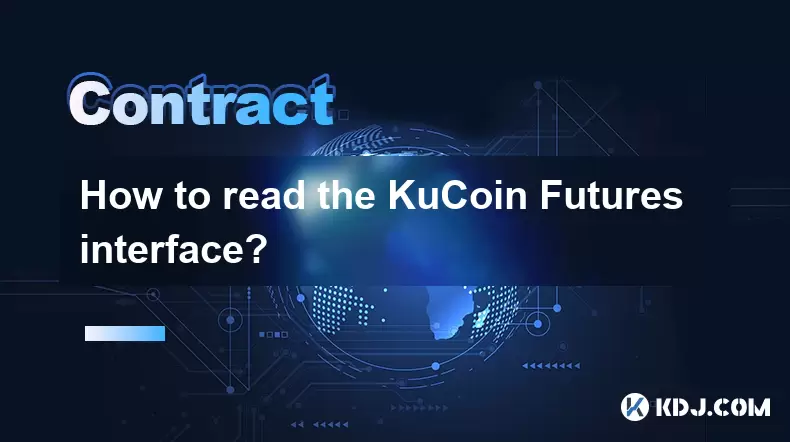-
 Bitcoin
Bitcoin $117700
-0.03% -
 Ethereum
Ethereum $3805
0.49% -
 XRP
XRP $3.098
-1.00% -
 Tether USDt
Tether USDt $1.000
0.03% -
 BNB
BNB $792.8
-1.72% -
 Solana
Solana $177.9
-1.95% -
 USDC
USDC $1.000
0.02% -
 Dogecoin
Dogecoin $0.2202
-1.55% -
 TRON
TRON $0.3278
-2.92% -
 Cardano
Cardano $0.7641
-2.43% -
 Hyperliquid
Hyperliquid $42.21
-2.68% -
 Sui
Sui $3.758
-1.58% -
 Stellar
Stellar $0.4080
-3.21% -
 Chainlink
Chainlink $17.75
-0.33% -
 Bitcoin Cash
Bitcoin Cash $591.8
4.96% -
 Hedera
Hedera $0.2561
-3.09% -
 Avalanche
Avalanche $23.34
-4.24% -
 Litecoin
Litecoin $110.7
1.96% -
 UNUS SED LEO
UNUS SED LEO $8.956
-0.01% -
 Toncoin
Toncoin $3.410
0.79% -
 Ethena USDe
Ethena USDe $1.001
0.03% -
 Shiba Inu
Shiba Inu $0.00001288
-1.82% -
 Uniswap
Uniswap $10.07
-2.06% -
 Polkadot
Polkadot $3.807
-2.27% -
 Monero
Monero $308.2
-2.15% -
 Dai
Dai $1.000
0.03% -
 Bitget Token
Bitget Token $4.521
-0.30% -
 Pepe
Pepe $0.00001134
-1.52% -
 Cronos
Cronos $0.1457
0.65% -
 Aave
Aave $274.9
-2.47%
How to read the KuCoin Futures interface?
KuCoin's Futures interface features a dynamic layout with a central chart, real-time order book, and an order panel for placing long/short trades—mastering each section boosts trading efficiency.
Jul 30, 2025 at 03:14 pm

Understanding the KuCoin Futures Trading Interface Layout
When you first access the KuCoin Futures trading page, you’ll see a multi-panel layout designed for efficient trading. The main chart area dominates the center, offering real-time price action with customizable indicators like moving averages or RSI. To the left, you’ll find the order book, which displays all active buy and sell orders. This is critical for gauging market depth — look for clusters of orders to identify support and resistance levels. On the right, the order placement panel lets you enter long or short positions. Each section updates dynamically, so understanding how they interact is essential for timely decisions.
Interpreting the Order Book and Market Depth
The order book shows two columns: bids (buyers) in green and asks (sellers) in red. The numbers represent price levels and the corresponding quantity of contracts. For example, if you see "0.05 BTC @ $60,100" under bids, it means someone is willing to buy 0.05 BTC at that price. Use the depth chart below the order book to visualize cumulative volume — a steep slope suggests strong resistance or support. Hovering over an entry in the order book often reveals the order size and sometimes the trader’s leverage level, which can hint at institutional activity.
Navigating the Position and Margin Section
Below the chart, you’ll see your current open positions. Each position shows key data: entry price, liquidation price, unrealized P&L, and leverage used. If your liquidation price is too close to the current market price, it’s a red flag — adjust your leverage or add margin immediately. The margin section also shows your available balance and used margin. Always ensure your maintenance margin ratio stays above the threshold (e.g., 0.5%) to avoid forced liquidation. Click the “Add Margin” button to deposit more funds into an open position — this increases your buffer against price swings.
Placing Orders: Step-by-Step Breakdown
- Select the contract type (e.g., BTCUSDT perpetual or quarterly futures).
- Choose order type: Limit (set your price), Market (execute instantly at best available), or Stop-Market (triggers when price hits a level).
- Enter the quantity in USD or contracts — KuCoin auto-calculates based on your leverage.
- Set leverage using the slider — from 1x to 100x. Confirm the liquidation price updates accordingly.
- Click “Buy/Long” or “Sell/Short” — a preview window will show fees, estimated entry, and liquidation risk.
- Confirm the order. If using a stop order, define the trigger price precisely — a 0.5% buffer from current price is common to avoid premature execution.
Reading the Funding Rate and Its Impact
The funding rate appears near the top of the interface, usually as a percentage (e.g., 0.01%). This rate determines how much long or short traders pay each other every 8 hours. If the rate is positive, longs pay shorts — signaling bullish sentiment. If negative, shorts pay longs, indicating bearish pressure. High funding rates can distort price action; for example, a very positive rate might precede a short squeeze. Monitor this rate before entering large positions — it directly affects your holding costs.Using the Trade History and P&L Tab
At the bottom, the trade history tab logs every executed order, including price, time, and fee. This is vital for reconciling your strategy with actual outcomes. The P&L tab breaks down realized gains/losses per trade. For instance, closing a long position at $61,000 after entering at $60,000 with 10x leverage on 1 BTC yields a $1,000 profit (minus fees). Use this tab to audit performance — if your P&L consistently dips after fees, consider tightening stop-losses or reducing leverage.Frequently Asked Questions
What does the “Mark Price” mean in the position panel?
The mark price is a fair value derived from multiple exchanges to prevent manipulation. KuCoin uses it to calculate liquidation and unrealized P&L — not the last traded price. If your position’s liquidation price is based on mark price, sudden spikes won’t trigger false liquidations.How do I change the chart time frame?
Click the time buttons (1m, 5m, 1h, etc.) directly below the chart. Right-click the chart to add indicators like Bollinger Bands or MACD — each can be customized via the settings icon (gear symbol) in the top-right of the chart area.Why is my order not filling even at the bid/ask price?
This often happens with large market orders. The order book may lack sufficient volume at that exact price. Switch to a limit order and set it slightly inside the spread — e.g., 0.1% better than the best bid — to ensure execution.Can I see my total fees for the day?
Yes. Go to the “Futures Account” tab in your wallet section. Filter by date range and select “Fees” — it breaks down taker and maker fees per trade. This helps optimize your strategy; for example, using limit orders reduces fees by up to 50%.
Disclaimer:info@kdj.com
The information provided is not trading advice. kdj.com does not assume any responsibility for any investments made based on the information provided in this article. Cryptocurrencies are highly volatile and it is highly recommended that you invest with caution after thorough research!
If you believe that the content used on this website infringes your copyright, please contact us immediately (info@kdj.com) and we will delete it promptly.
- Retail, Crypto, Visibility: Decoding the Signals in Today's Market
- 2025-07-31 12:31:08
- Bitcoin, Altcoin Selloff, and the FOMC Decision: A Crypto Market Rollercoaster
- 2025-07-31 12:35:33
- Cold Wallet vs. MetaMask: A Crypto Wallet Revolution?
- 2025-07-31 10:30:57
- Bitcoin Casinos in 2025: Instant Payouts and Welcome Bonuses
- 2025-07-31 10:50:33
- Meme Coins in 2025: Token Burns and the Quest for Moonshots
- 2025-07-31 10:50:33
- Unlocking Value: A Deep Dive into Random Year 1 oz Krugerrand Gold Coins
- 2025-07-31 10:57:21
Related knowledge

Why is my Bitstamp futures position being liquidated?
Jul 23,2025 at 11:08am
Understanding Futures Liquidation on BitstampFutures trading on Bitstamp involves borrowing funds to open leveraged positions, which amplifies both po...

How to report Bitstamp futures for taxes?
Jul 30,2025 at 08:35am
Understanding Bitstamp Futures and Taxable EventsWhen trading Bitstamp futures, it’s essential to recognize that these financial instruments are treat...

Does Bitstamp offer inverse contracts?
Jul 23,2025 at 01:28pm
Understanding Inverse Contracts in Cryptocurrency TradingIn the realm of cryptocurrency derivatives, inverse contracts are a specific type of futures ...

What is the difference between futures and perpetuals on Bitstamp?
Jul 27,2025 at 05:08am
Understanding Futures Contracts on BitstampFutures contracts on Bitstamp are financial derivatives that allow traders to speculate on the future price...

How to find your Bitstamp futures trade history?
Jul 23,2025 at 08:07am
Understanding Bitstamp and Futures Trading AvailabilityAs of the current state of Bitstamp’s service offerings, it is critical to clarify that Bitstam...

Can I use a trailing stop on Bitstamp futures?
Jul 23,2025 at 01:42pm
Understanding Trailing Stops in Cryptocurrency TradingA trailing stop is a dynamic type of stop-loss order that adjusts automatically as the price of ...

Why is my Bitstamp futures position being liquidated?
Jul 23,2025 at 11:08am
Understanding Futures Liquidation on BitstampFutures trading on Bitstamp involves borrowing funds to open leveraged positions, which amplifies both po...

How to report Bitstamp futures for taxes?
Jul 30,2025 at 08:35am
Understanding Bitstamp Futures and Taxable EventsWhen trading Bitstamp futures, it’s essential to recognize that these financial instruments are treat...

Does Bitstamp offer inverse contracts?
Jul 23,2025 at 01:28pm
Understanding Inverse Contracts in Cryptocurrency TradingIn the realm of cryptocurrency derivatives, inverse contracts are a specific type of futures ...

What is the difference between futures and perpetuals on Bitstamp?
Jul 27,2025 at 05:08am
Understanding Futures Contracts on BitstampFutures contracts on Bitstamp are financial derivatives that allow traders to speculate on the future price...

How to find your Bitstamp futures trade history?
Jul 23,2025 at 08:07am
Understanding Bitstamp and Futures Trading AvailabilityAs of the current state of Bitstamp’s service offerings, it is critical to clarify that Bitstam...

Can I use a trailing stop on Bitstamp futures?
Jul 23,2025 at 01:42pm
Understanding Trailing Stops in Cryptocurrency TradingA trailing stop is a dynamic type of stop-loss order that adjusts automatically as the price of ...
See all articles

























































































